Cooking with Fresh Herbs
Learn everything you need to know about cooking with fresh herbs: including how to store them, the different varieties, and how to make them last longer.
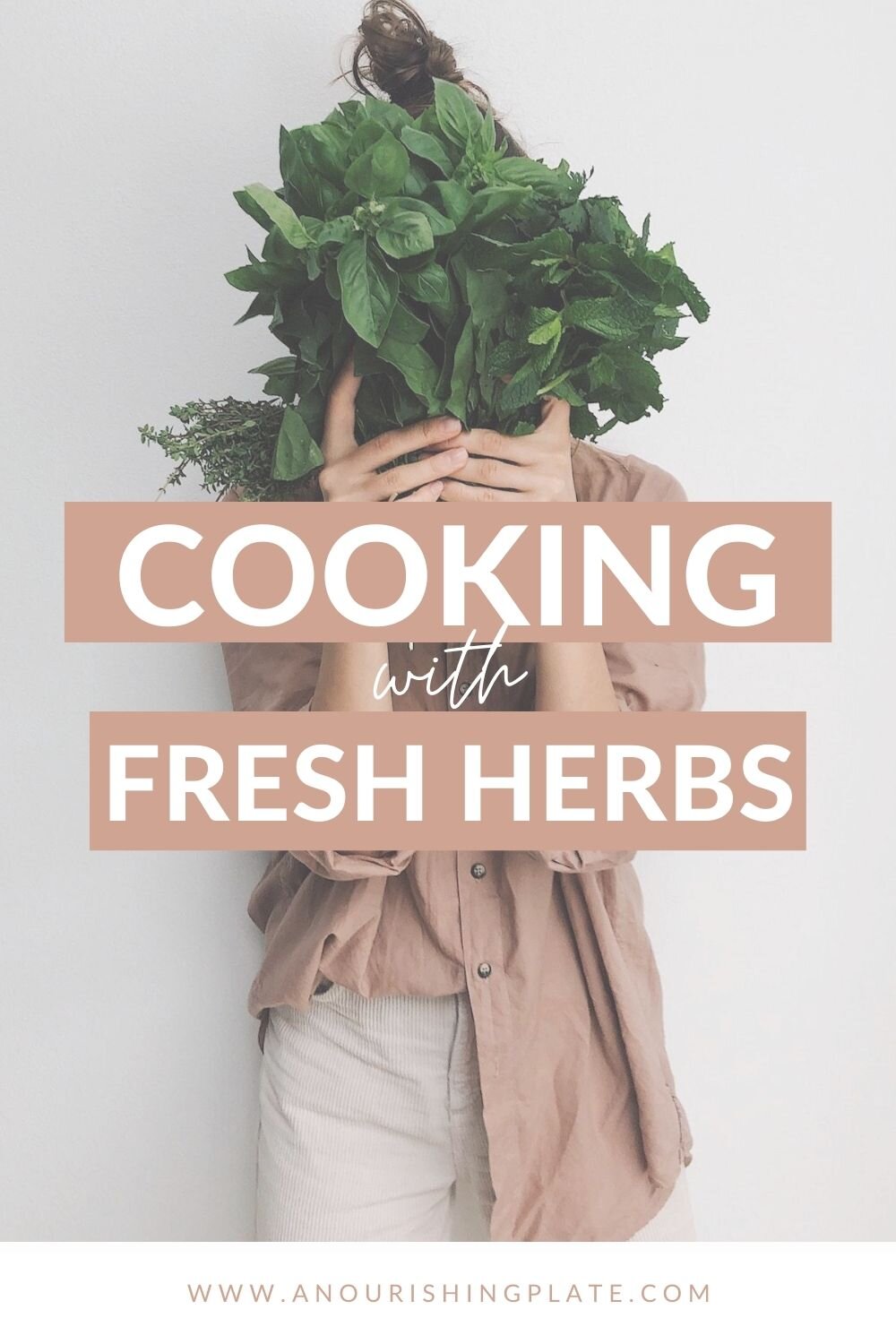
Fresh herbs add a noticeable boost of flavor to your cooking. They help bring life to salads, sauces, and marinades, and they have the ability to transform desserts, cocktails, and even smoothies.
How to Wash Fresh Herbs
Just like fresh fruits and vegetables, you want to make sure to wash your herbs before using them.
You can do this in a couple of ways:
- Dunk the fresh herbs in a bowl of cold water, and swish around to shake off the grit/dirt. Pat dry with a clean dish towel.
- Put in a salad spinner, run cold water over them, and spin until dry.
How to Store Fresh Herbs
Once your herbs are washed, trim off the tough root ends at the bottom of the stems.
Like the leaves, the roots are very flavorful and can be used in pesto, in bone broth, or minced up, and added to vegetables, chicken, or fish.
Hard vs Soft Herbs
There are two types of herbs: soft and hard. Soft herbs have a soft stem, whereas hard herbs have a, well, hard stem.
You’ll easily be able to differentiate soft herbs from hard herbs since hard-stemmed herbs have a noticeably brown, wood-like texture.
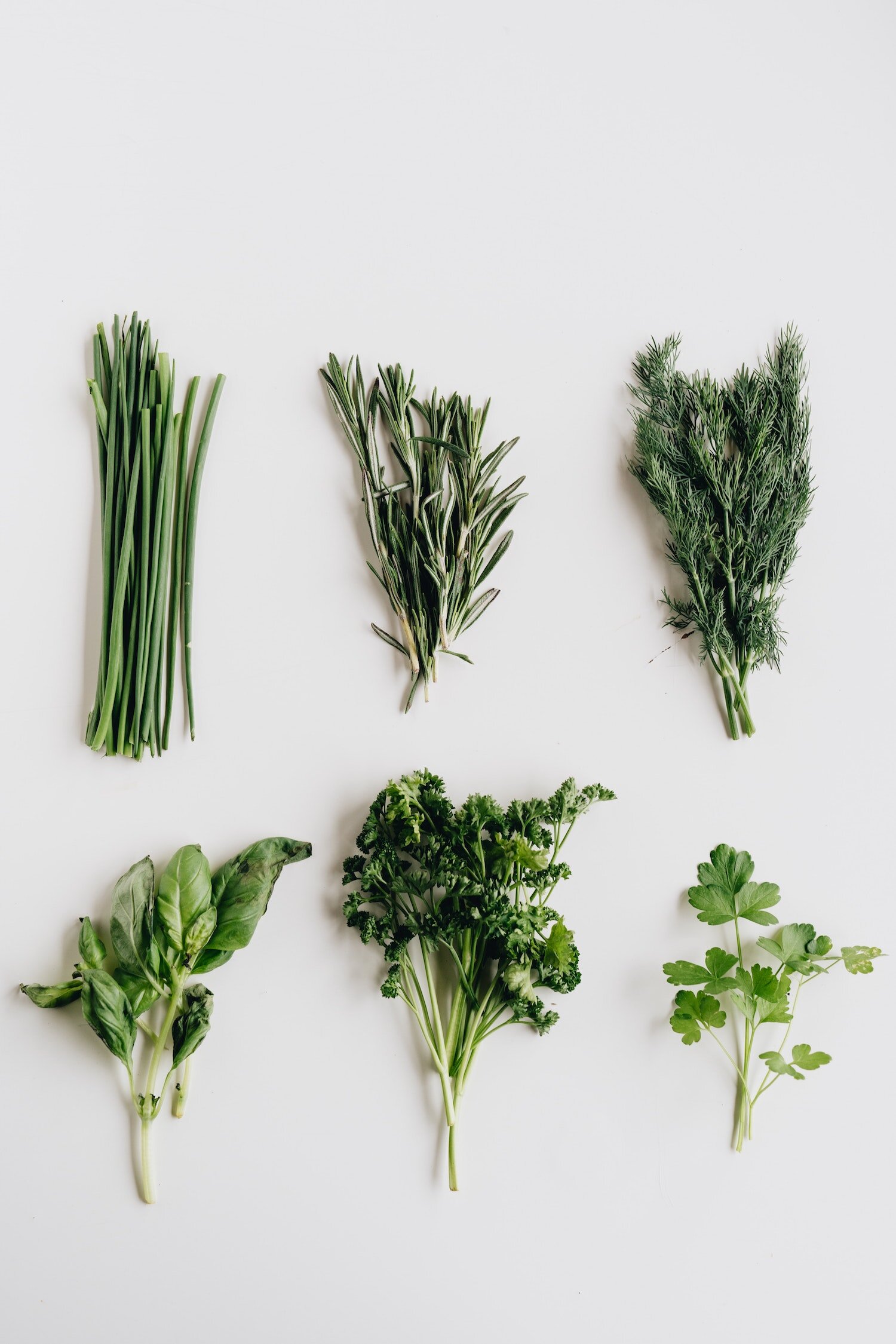
Soft Herbs
To store soft, delicate herbs such as cilantro, parsley, mint, tarragon, and dill:
1. You’ll simply place them in a glass jar with an inch or two of cold water like you would a bouquet of flowers, with the stems in the water.
2. Make sure and replace the water every couple of days. This method will make the herbs last up to one week.
3. To take it a step further, you can add a small silicone or plastic bag over the top of the leaves.
Pull the bag down until it reaches the glass. This helps keep the temperature of the herbs consistent, with the opening and closing of the fridge. Make sure to still replace the water every couple of days. This method will help the herbs last up to 2 weeks.
Important to note: Make sure not to place your herbs near the back of your fridge This area is the coldest and could accidentally freeze them, which will cause them to spoil.
Fresh basil can be tricky.
If you live in a cold and/or drier climate, basil stores best at room temperature in the same method as above (with a little bit of water covering the stems and a bag placed over the top)
If you live in a very humid climate, basil lasts the longest when stored in the fridge. I find it turns black very quickly on the countertop in the humidity.
Hard Herbs
Hard-stemmed herbs don’t require as much water as soft-stemmed herbs, so you’ll want to store them a little differently.
To store hard-stemmed herbs such as thyme, rosemary, oregano, and sage:
1. Place the freshly washed herbs in a single layer on a damp, clean dish towel or paper towel, and loosely roll them up. The dampness will keep them from drying out.
2. Then, put the towel in either a reusable ziplock plastic bag or a reusable silicone bag.
3. Store in the refrigerator for up to two weeks.
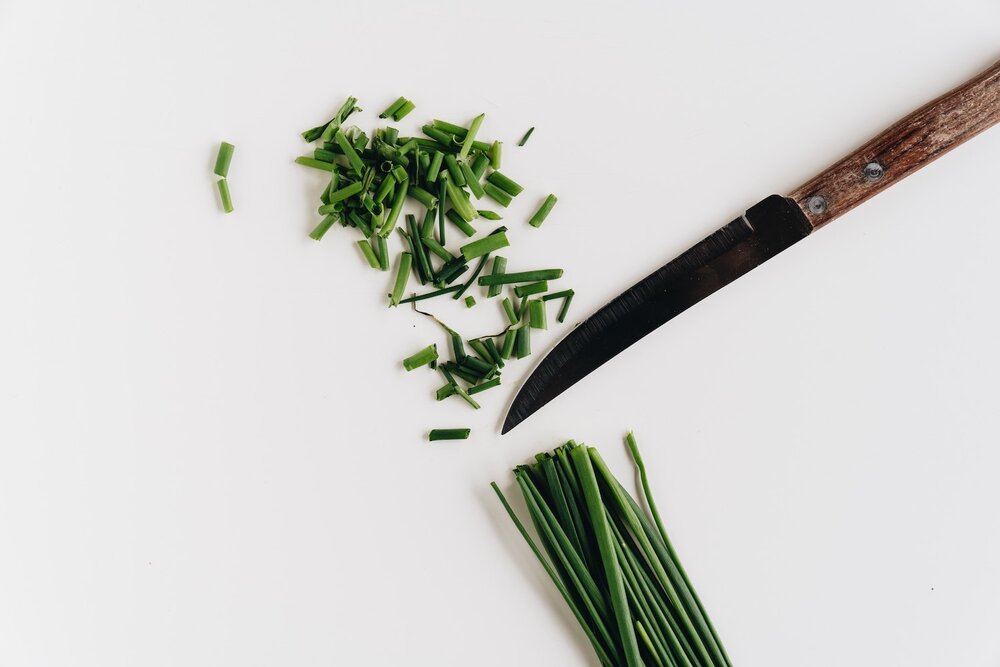
How to Freeze Fresh Herbs
If you’re going out of town, or have too much that you know you won’t be able to use in time, here’s a really great hack to avoiding food waste and money.
- Add your herbs to a blender along with some extra virgin olive oil or broth.
- Once combined, pour the mixture Into an ice cube tray (these silicone molds make them easy to pop out). Side note: if using oil, only fill up half of each cube.
- Put the ice cube tray in the freezer until frozen.
- Once frozen, transfer to a reusable silicone bag, and store in the freezer until ready to use.
- When ready to use, add a cube to your meal at the beginning of your cooking. This will allow it to melt while adding a burst of flavor.
Fresh Herbs vs Dry Herbs: When to Use Each
Dried herbs need more time for their flavor to develop, so it’s best to use them at the beginning of the cooking process. Make sure to add fresh herbs toward the end of the cooking process to keep both their color and flavor vibrant.
Substituting Dried Herbs With Fresh Herbs?
Dried herbs are more concentrated than fresh herbs, so you’ll want to use about three times more fresh than you would dried.
- for example, if a recipe calls for 1 teaspoon of dried oregano, you would add 1 tablespoon of fresh oregano.
Popular Fresh Herbs
Basil
- There are many varieties of basil, but the most popular in the U.S. is Italian basil.
- Its flavor is sweet with a hint of anise.
- It’s most commonly used in Italian cuisines such as basil pesto and pasta dishes and is often served with tomatoes.
- Ideas for how to use it: add it to garnish pasta dishes or use it in smoothies or in a fruit salad.
Rosemary
- Its flavor is strong and piney.
- It’s most commonly used with meat, pasta, roasted potatoes, and soup.
- Ideas for how to use it: roast whole with carrots, garnish creamy risotto with it, serve with pasta, add to sourdough bread before baking, add to a cocktail as a garnish, and for the aroma.
Cilantro
- Commonly called Coriander in other countries.
- Its flavor is bright and citrusy.
- It’s most commonly used in Indian, Asian, Caribbean, and Mexican cuisines.
- It’s a cooling herb, so it works well with spicy dishes.
- Ideas for how to use it: curries, tacos, salads, stir-fries, jalapeño margaritas, fruit salsa.
- Fun fact: for people with certain genes, cilantro tastes like soap.
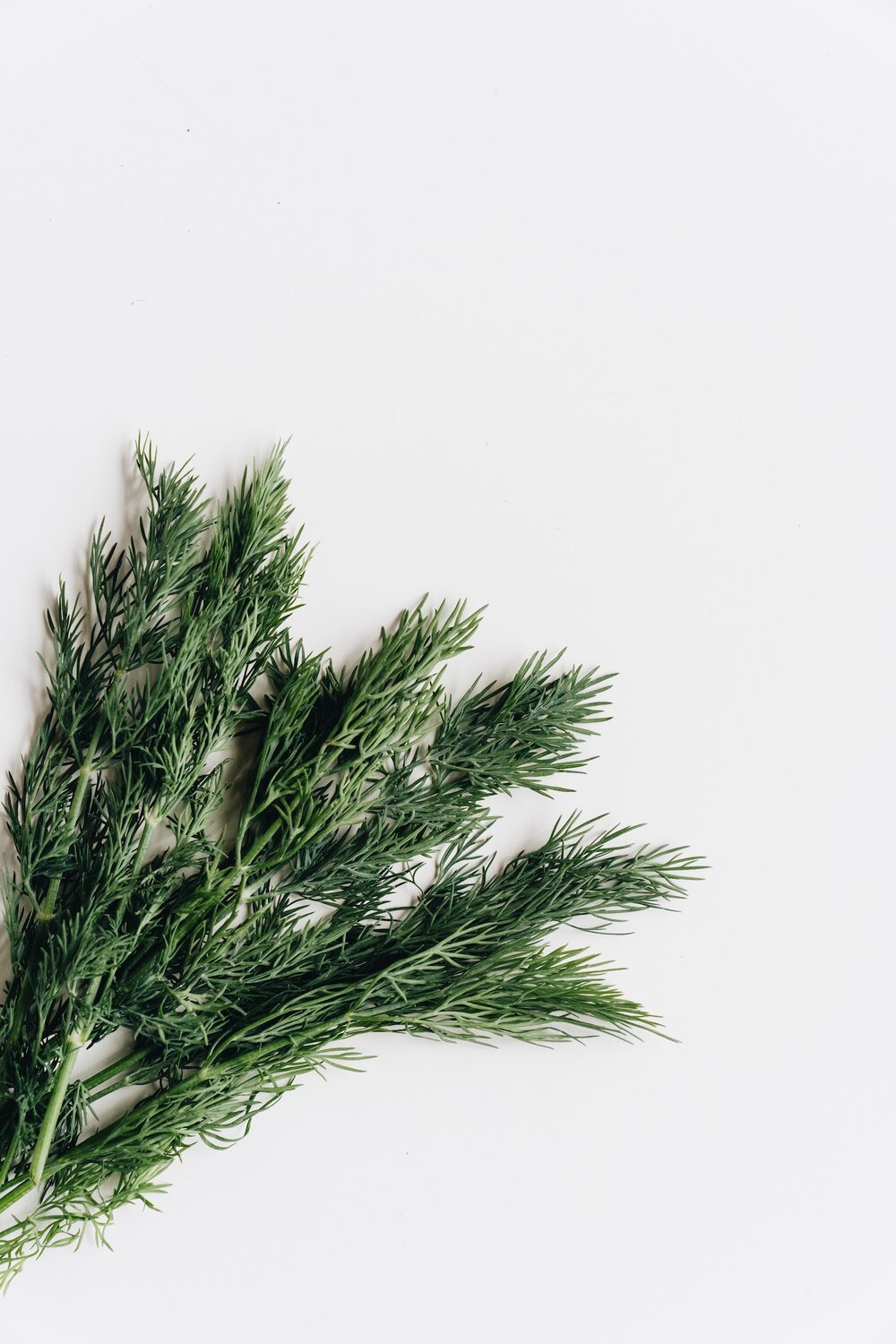
Dill
- Its flavor is grassy, clean, and earthy.
- Most commonly used in flavoring pickles.
- Ideas for how to use it: tzatziki sauce, quick pickled vegetables, potato salad, eggs, roasted carrots or beets, greek salad, or with salmon.
Mint
- Its flavor is sweet and has a strong cooling effect.
- It’s most commonly used in Thai dishes and Middle Eastern cuisine, served with lamb, paired with chocolate, and served in cocktails.
- Ideas for how to use it: served with watermelon, homemade mojitos, mint chocolate shake/smoothie, in tea, or salad.
- Pro tip: clapping mint leaves between your hands activates the natural oils in the leaves and will help bring out its flavor and aroma.
Oregano
- Its flavor is warm and slightly spicy with a hint of sweetness.
- It’s most commonly used in pizza and pasta sauces, Mediterranean and Mexican dishes (such as tacos), and salad dressings.
- Ideas for how to use it: add it to pesto, roasted potatoes, top sourdough focaccia bread, and soup.
Parsley
- There are two varieties: flat leaf, also called Italian parsley (peppery and clean flavor), and curly parsley (quite bland).
- Flat-leaf is most commonly used in pasta, sauces, and salads while curly-leaf parsley is used mainly as a garnish.
- Ideas for how to use flat-leaf parsley: Italian pasta salad, chimichurri sauce for grilled meats or vegetables, served on top of homemade ricotta cheese, in place of basil in pesto, Tabbouleh.
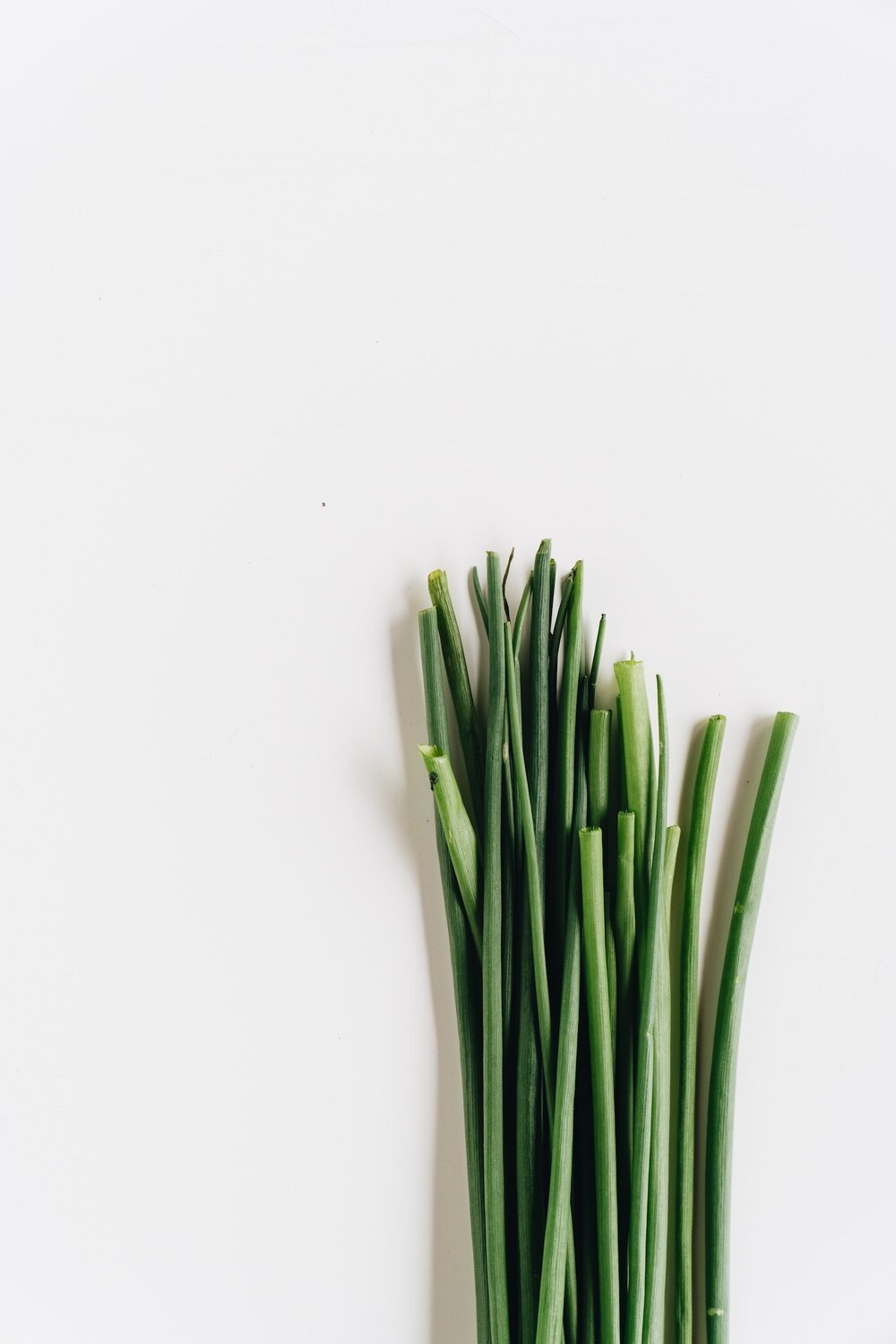
Chives
- These are in the same family as onions, so they have a light oniony flavor.
- They’re most commonly used in heavy foods like butter and cream cheese because they cut the heaviness of those foods.
- Ideas for how to use chives: frittatas, soups, dips, mashed potatoes, as a garnish
Tarragon
- Its flavor is bittersweet (slightly sweeter) and tastes like anise, which is a combination of fennel and licorice
- Tarragon is most commonly used with chicken, salmon, eggs, and spring vegetables.
- Ideas for how to use tarragon: mayo, salad dressings, marinades, roast vegetables (especially asparagus), cocktails
Thyme
- Its flavor is very earthy with a slightly minty taste.
- It’s most commonly used in the spice blend Herbes de Provence, and works best in combination with other herbs such as rosemary, oregano, and sage.
- Ideas for how to use thyme: soups, stews, rice dishes, roasted vegetables
Sage
- Its flavor is both sweet and bitter with notes of pine and citrus.
- Sage is most commonly used in brown butter sauces, soups, risotto, and pasta.
- Ideas for how to use it: winter squash and sage dairy-free risotto, cook mushrooms in sage-infused oil (or dairy-free butter).

